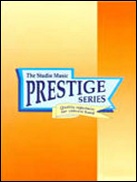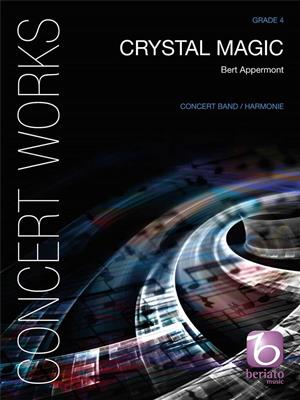Results
-
 £209.95
£209.95DREAMSCAPES (Prestige Concert Band - Score and Parts) - Ellerby, Martin
A suite in four movements, each depicting in a dramatic and colourful way, four cities of the imagination: Eldorado, Avalon, Shangri-La and Xanadu! are explored and the composer's dreams are laid bare to the listener. Performance time 16'24" Grade 4.5-5(Recorded on QPRM143D DREAMSCAPES, Royal Northern College of Music Wind Orchestra)
Estimated dispatch 7-14 working days
-
 £44.95
£44.95DREAMSCAPES (Prestige Concert Band - Score only) - Ellerby, Martin
A suite in four movements, each depicting in a dramatic and colourful way, four cities of the imagination: Eldorado, Avalon, Shangri-La and Xanadu! are explored and the composer's dreams are laid bare to the listener. Performance time 16'24" Grade 4.5-5(Recorded on QPRM143D DREAMSCAPES, Royal Northern College of Music Wind Orchestra)
Estimated dispatch 7-14 working days
-
 £94.99
£94.99Hollandse Hits Wind Band Set (Score & Parts)
This medley is a colourful and creative foray into the pop music from our friends across the water in Holland. Peter Kleine Schaars combines four songs by four artists that have been popular both in Holland and beyond.
Estimated dispatch 7-14 working days
-
 £97.02
£97.02Our First Christmas Concert! (Concert Band - Score and Parts)
Stretch your beginning band budget dollars at Christmastime with this outstanding collection of four holiday favorites! Includes four complete band arrangements in one, all grade 1.5. Includes: A CHRISTMAS CLASSIC by James Swearingen DOWN THROUGH THE CHIMNEY by Jerry Williams THE SEASON by James Swearingen A SNOWY CHRISTMAS DAY by Jerry Williams
Estimated dispatch 7-14 working days
-
 £189.99
£189.99Masked - Alex Shapiro
Masked by Alex Shapiro is composed in the exact shape of a Classical Minuet and Trio waltz, though the music--a whimsical if somewhat demented masked ball (or, balls, in this case)--bears little connection to that of Mozart or Haydn. Historically, third movement Minuets gave way to the joke-like Scherzo, and the Trio section tips its hat to some welcome levity. This is one of four movements in Suspended, a piece is composed in the tradition of an 18th century Classical symphony: four contrasting movements which serve specific functions and reveal a story. The work begins in absolute rage and chaos, then alternates between moments of grief and bleakness. Grim reality shifts to a macabre, circus-like insanity, and by the end, flickers of genuine hope contrast a pervasive sense of dread, and finally arrive at more optimistic possibilities. To perform the piece, you'll need an audio system capable of playing the prerecorded audio tracks from a laptop computer via a small digital audio interface connected to an audio mixer. Download information is provided in the printed piece.
Estimated dispatch 7-14 working days
-
 £74.99
£74.99Los Cuatro Vientos - Johan de Meij
Los Cuatro Vientos is Johan de Meij's first composition for the grade 2.5 level. A playful suite in four movements, each one depicting the directions of the wind: Four Winds for Winds!
Estimated dispatch 7-14 working days
-
 £149.99
£149.99Crystal Magic - Bert Appermont
The source of inspiration for this work is the magical world of gemstones. The special powers of four of these stones appealed to composer Bert Appermonts' imagination. In this work, different distinguishing atmospheres are evoked. The work is composed as a suite containing four movements: Carnelian: The Stone of Perseverance, Opal: The Stone of Misfortune, Amethyst: The Stone of Wisdom and Amazonite: The Stone of Playfulness. This is a challenging and striking piece of music to inspire your audience in a concert or a jury during a contest.
Estimated dispatch 7-14 working days
-
 £58.50
£58.50Sousa Classics - John Philip Sousa
Written for the Young Band series and arranged by Victor Lpez, this piece features "El Capitan," "The Liberty Bell," "The Washington Post March," and "The Stars and Stripes Forever"four trio sections of John Philip Sousa's greatest marches. You can never go wrong with a march, and this dynamic arrangement has four of Sousa's best. Bravo! (2:30)
Estimated dispatch 7-14 working days
-
 £107.50
£107.50Our First Christmas Concert! - James Swearingen
Stretch your beginning band budget dollars at Christmastime with this outstanding collection of four holiday favorites! Includes four complete band arrangements in one, all grade 1.5.Includes:A CHRISTMAS CLASSIC by James SwearingenDOWN THROUGH THE CHIMNEY by Jerry WilliamsSOUNDS OF THE SEASON by James SwearingenA SNOWY CHRISTMAS DAY by Jerry Williams
Estimated dispatch 7-14 working days
-
 £154.99
£154.99Concertino for Xylophone - Jan Bosveld
This composition was commissioned by "Koningin Wilhelmina Wamel" on the occasion of its one hundred year anniversary. That it is a composition for xylophone and concertband lies in the fact that Harmony has a very talented, young percussion player in the person of Barry Jurjes. The piece is both melodically and harmonically based on four notes (C - Dflat - F - G). The structure is divided into four parts: slow - fast - slow - fast.
Estimated dispatch 7-14 working days
